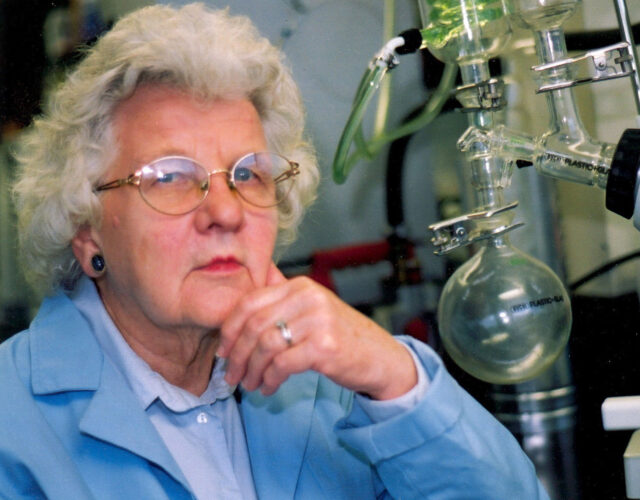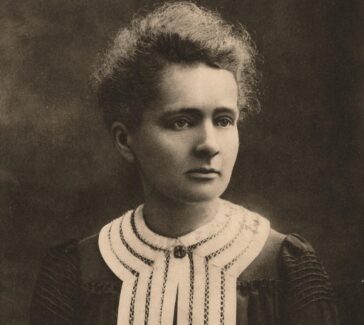Ruth Benerito
The invention of wrinkle-resistant cotton fabric by Benerito, a physical chemist, is credited with saving the cotton industry.

Synthetic fibers, such as nylon and polyester, were invented in the 1930s and 1940s. While this was good news for anyone tasked with the chore of ironing—clothing made from these fibers needed no pressing—it was bad news for cotton farmers. Although cotton might be more comfortable against the skin and feel cooler in the summer, many consumers opted for the new, easy-care synthetic clothes.
It has been said that Ruth Benerito (1916–2013) saved the cotton industry with her discovery of a method for creating wrinkle-resistant cotton. By attaching organic chemicals to cotton fibers, Benerito and her team made cotton fabric not just wrinkle resistant but also stain and flame resistant.
Teaching High School
Benerito grew up in New Orleans as Ruth Rogan. She completed high school at age 14 and entered H. Sophie Newcomb Memorial College of Tulane University at 15. She graduated from Newcomb during the Great Depression and hoped to do research, but jobs were scarce. Instead, she taught high school in Jefferson Parish, west of New Orleans. In addition to science and math Benerito was assigned to teach driver’s education, even though she had never driven a car.
Work at the USDA

While working as a teacher, Benerito took night classes to earn her master’s degree from Tulane University. During World War II she taught college classes, and after the war she earned a PhD in physical chemistry from the University of Chicago.
She married Frank Benerito in 1950 and went to work at the U.S. Department of Agriculture (USDA) Southern Regional Research Laboratories in New Orleans, where she spent most of her career. During the Korean War she developed a way to deliver fat intravenously to patients who were too sick to eat—a method used to feed seriously wounded soldiers.
Wrinkle-Resistant Cotton
In the 1950s Benerito’s research team discovered how to treat cotton fibers so that the chainlike cellulose molecules were chemically joined. At the time, chemists knew that cellulose molecules could stick to each other by way of hydrogen bonds, but hydrogen bonds are weak and easily broken, making cotton fabric prone to wrinkling.
The new treatment strengthened the bonds between cellulose molecules by inserting short organic molecules between them rather like the rungs of a ladder. The new product was one enormous molecule with different properties from the original cellulose molecules. This “crosslinking” made cotton wrinkle resistant. Once Benerito worked out her method of attaching organic chemicals to cotton fibers, all sorts of valuable properties could be added to the fibers, such as stain and flame resistance.
A Commitment to Education
In later years, while she continued to research cotton fibers, Benerito taught classes part-time at Tulane and at the University of New Orleans. She retired from the USDA in 1986 but continued teaching until 1997. At the age of 86 she received the prestigious Lemelson-MIT Lifetime Achievement Award for her work on textiles and her commitment to education.
Featured image: Lemelson-MIT Program, © 2003 Massachusetts Institute of Technology/Mary Jackson.



